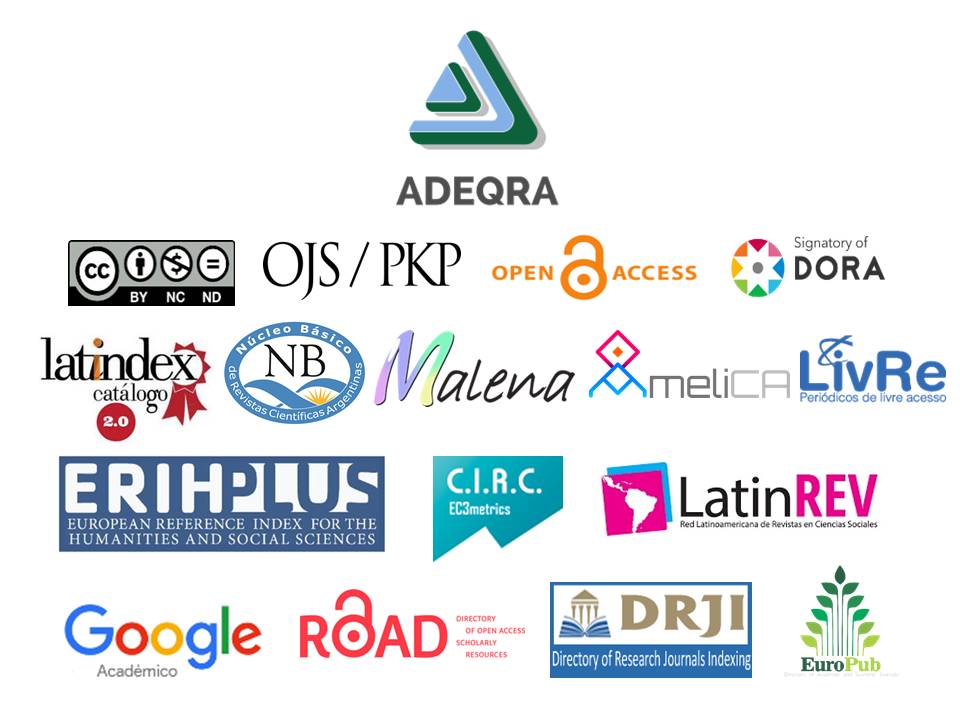STS experience for food education: the aquaponic
Book review
Keywords:
Foodborne Diseases, Zoonosis, STS Education, Environmental, Food and Health EducationAbstract
Most people have animals in their home. There are also different spaces to contact us with the nature in which there are animals, which include from National Parks to Educational Farms. Therefore, it is important to take into account various aspects for the prevention of zoonosis and Foodborne Diseases. The Book SPACES WITH ZOONOSIS AND FOOD analyzes the relationship between human beings, animals and food in different spaces. Didactic proposals are presented for the development of critical skills at different educational levels, related to food modifications and the prevention of zoonoses.
References
Deem, S. (1999). Infectious and parasitic diseases of raptors. Compendium of Continuing Education, 21:329-337.
Lampert, D. y Porro, S. (2018). Formación docente de escuelas agropecuarias sobre etas en la elaboración de productos artesanales. II Congreso Internacional de Zoonosis IX Congreso Argentino de Zoonosis.
Lampert, D. y Porro, S. (2019). Innovations in the Development of Critical Thinking and the Teaching of the Nature of Science and Technology: Background and Proposal for Food Engineering Course of Studies. 5th International Conference on Higher Education Advances (HEAd’19)
Lampert, D., Leva,G., Russo,M. y Porro,S.( 2019). Bioseguridad alimentaria en una escuela agraria: situación actual y propuestas educativas de mejora. V Jornadas Argentinas de Bioseguridad y Biocustodia.215 | Educación en la Química en Línea, Vol. 25 Nº 2, pp 210-215, 2019
Leotta, G. A., Deza, N., Origlia, J., Toma, C., Chinen, I., Miliwebsky, E.,... y Rivas, M. (2006). Detection and characterization of Shiga toxinproducing Escherichia coli in captive non-domestic mammals. Veterinary microbiology, 118(1-2), 151-157.
Marcos, E. (2013). El concepto una salud como integrador de la interfasehumano-animal-ambiental, frente a las enfermedades emergentes, reemergentes y transfronterizas. Epidemiología y Salud, 1(3),16-20.
Saggese, M. D. (2007). Medicina de la conservación, enfermedades y aves rapaces. Hornero 022 (02): 117-130.
Vigo, G., Caffer, M., Origlia, J., Carriquiriborde, M., y Leotta, G. (2011). Salmonella enterica y Salmonella enterica diarizonae aisladas de
ofidios en el Parque Zoológico de La Plata, Argentina. Rev. Med. Vet. (B. Aires), 92(1/2), 19-22.
WHO Expert Committee on Bacterial and Viral Zoonoses y Food and Agriculture Organization of the United Nations. (1982). Zoonosis
bacterianas y víricas: informe de un Comité de Expertos de la OMS, con la participación de la FAO [se reunió en Ginebra del 22 al
de septiembre de 1981]. Ginebra: Organización Mundial de la Salud. http://www.who.int/iris/handle/10665/38671
Downloads
Published
How to Cite
Issue
Section
License

This work is licensed under a Creative Commons Attribution-NonCommercial-NoDerivatives 4.0 International License.



